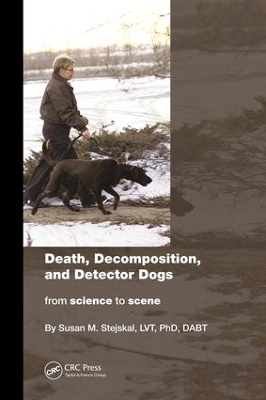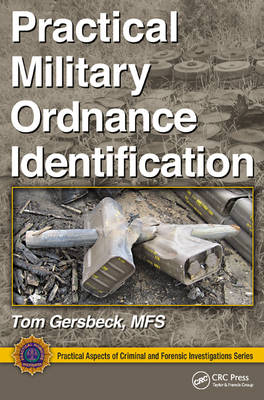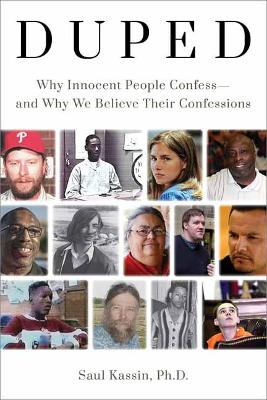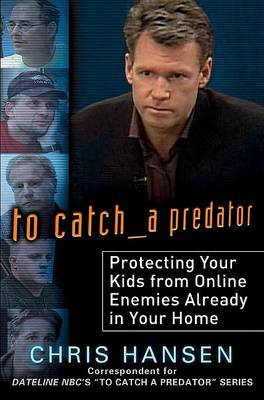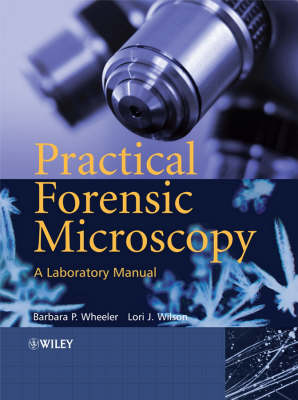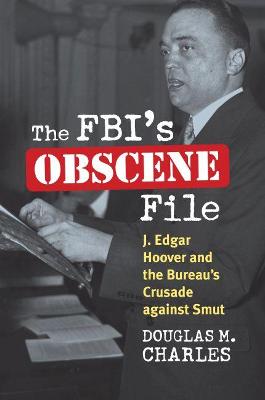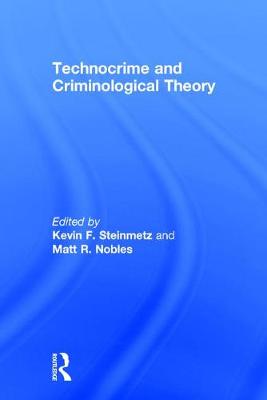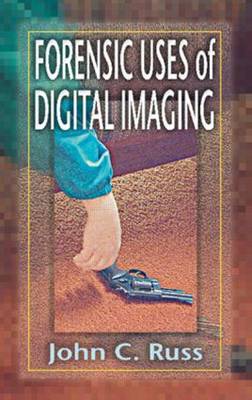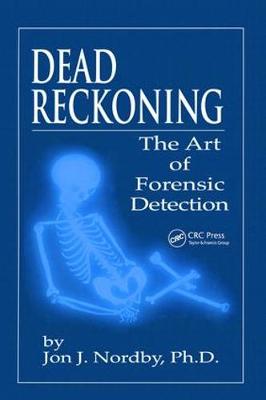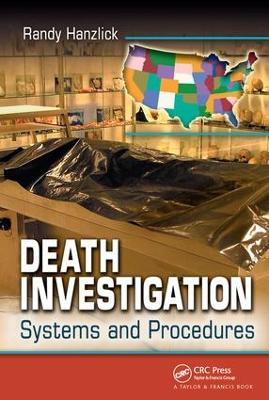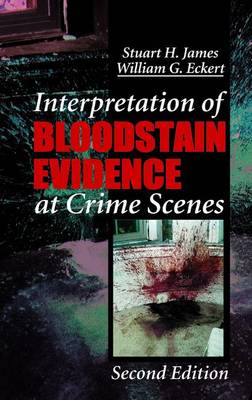Death, Decomposition, and Detector Dogs: From Science to Scene is designed to help police investigators and Human Remains Detection K9 handlers understand the basics of forensic taphonomy (decomposition) and how to most effectively use a human remains detection (HRD) K9 as a locating tool. The book covers basic anatomy and the physiology of canine
The threat variables associated with military ordnance are enormous, requiring the application of a structured process to identify unknown munitions. The focus of Practical Military Ordnance Identification is the application of a practical deductive process to identify unknown ordnance items that are commonly recovered outside military control. The author supplies a seven-step procedure to identify unknown munitions by their category, group, and type. Detailed logic trees help users narrow down...
Highly Commended, BMA Medical Book Awards 2014 Comprehensive and erudite, Forensic Psychiatry: Clinical, Legal and Ethical Issues, Second Edition is a practical guide to the psychiatry of offenders, victims, and survivors of crime. This landmark publication has been completely updated but retains all the features that made the first edition such a well-established text. It integrates the clinical, legal, and ethical aspects of forensic psychiatry with contributions from internationally regarded...
Duped: Why Innocent People Confess – and Why We Believe Their Confessions
by Saul Kassin
Handbook of Forensic Statistics (Chapman & Hall/CRC Handbooks of Modern Statistical Methods)
Handbook of Forensic Statistics is a collection of chapters by leading authorities in forensic statistics. Written for statisticians, scientists, and legal professionals having a broad range of statistical expertise, it summarizes and compares basic methods of statistical inference (frequentist, likelihoodist, and Bayesian) for trace and other evidence that links individuals to crimes, the modern history and key controversies in the field, and the psychological and legal aspects of such scientif...
Forensic Microscopy: A Laboratory Manual will provide the student with a practical overview and understanding of the various microscopes and microscopic techniques employed within the field of forensic science. Each laboratory experiment has been carefully designed to cover the variety of evidence disciplines within the forensic science field with carefully set out objectives, explanations of each topic and worksheets to help students compile and analyse their results. The emphasis is placed on...
What do pop artist Andy Warhol, sex researcher Alfred Kinsey, and cinematic comedians Abbott & Costello have in common? They all found a prominent place in the FBI's ""Obscene File."" In this startling new study Douglas Charles reveals how, for more than seventy years, FBI officials placed obscenity, pornography, and the politics of morality among their topmost concerns. Illuminating this largely neglected aspect of FBI history, Charles charts the evolution of the Bureau's efforts to combat t...
Forensic Drug Analysis
Technocrime and Criminological Theory
Cybercrime, computer crime, Internet crime, and technosecurity have been of increasing concern to citizens, corporations, and governments since their emergence in the 1980s. Addressing both the conventional and radical theories underlying this emerging criminological trend, including feminist theory, social learning theory, and postmodernism, this text paves the way for those who seek to tackle the most pertinent areas in technocrime. Technocrime and Criminological Theory challenges readers to...
Critical Infrastructure (CI) is fundamental to the functioning of a modern economy, and consequently, maintaining CI security is paramount. However, despite all the security technology available for threats and risks to CI, this crucial area often generates more fear than rational discussion. Apprehension unfortunately prompts many involved in CI p
Crime Scene Investigation Laboratory Workbook
by Patrick Jones and Trevor Stamper
The book presents lab exercises that place crime scene investigation into the overarching context of forensic science, separating what evidence and information can be derived from the crime scene and preliminary tests, versus advanced drug, ballistics, and other such testing back at the lab. This is to clearly distinguish those individuals who collect the evidence from those who solely work within the lab analyzing. The book presents lab exercises that can be completed within two-hour windows wh...
Each and every death scene presents new challenges to even the most seasoned investigator. Despite the unique nature of each scenario, using a standardized protocol is the key to ensuring consistent and accurate results. Death Scene Investigation: A Field Guide provides concise direction for the death scene investigator, crime scene investigator, coroner, medical examiner, or anyone associated with the investigation of death. Since the majority of deaths are due to natural causes, the book emph...
It happens all too often: The vague images of a poor quality video from a surveillance camera splash across the screen in a darkened courtroom and the guilt or innocence of the defendant hinges on whether or not the jury can determine if he or she is really the person in those images. Interpretation and misinterpretation of information about imaging in general, and digital image manipulation in computers in particular, by expert witnesses on both sides, and by counsel who ask questions that are...
Maintain peace of mind while you are working or living abroad wherever and however you travel. As an international traveler, you know there are risks. But are you doing everything you can to protect yourself and your belongings? Whether you are traveling for work or pleasure, Personal Security: A Guide for International Travelers enables you to pre
Bitemark Evidence (International Forensic Science and Investigation)
The first stand-alone textbook on the subject, this illuminating reference compiles the expertise and recommendations of a team of 21 eminent specialists from the disciplines of forensic odontology, DNA analysis, pathology, and jurisprudence. It is generously illustrated with more than 543 black and white photographs and 32 full-color pages that serve to illustrate the many facets of bitemark recognition, diagnosis, handling, excision, lifting, transillumination, storage, preservation, transport...
Geographic Information Systems in Law Enforcement, Criminal Investigation, and Counterterrorism: Second Edition features 100 new pages of text that broaden the scope of GIS uses into forensics and homeland security. This edition discusses crime scene related issues tying GIS to forensics. It presents material on geographic profiling and serial killers, analyzing spatial patterns for stationary and traveling killers. With 8 pages of color maps, it includes new high profile cases that show how suc...
Her Brentwood home became a hotbed for homicide. But in the wake of intense public and media attention, one saliant and hard truth was often overlooked: the murder of Nicole Brown-Simpson, while brutal and heinous in its form, was just one of thousands of homicides committed during that same year. Most escaped the scrutiny of public interest. Many never made it to trial, and still others were dismissed as natural deaths-perfect crimes that remain forever unsolved. How, then, do investigators sol...
Quantitative Anthropology: A Workbook contributes an anthropological perspective to quantitative methods. The book's authors address characteristics of quantitative data, entering and manipulating data in SPSS, graphical displays, distributions and measures of central tendency and dispersion, and including hypothesis testing with both parametric and nonparametric statistical tests. Increasingly complex exercises build on cumulative learning from chapter to chapter and stress the application of m...
Death Investigation: Systems and Procedures is the first book dedicated to the topic of death investigation from a legal standpoint as well as the administrative and operational procedures that pertain to the medical examiner and the coroner system in the United States. Unique in its perspective, this book is the only one not concerned with instructing on investigatory conduct, autopsy procedure, pathology, or the solving of crimes. Instead, it explains the concepts and principles of death inves...
Interpretation of Bloodstain Evidence at Crime Scenes, Second Edition
As witnessed in landmark criminal cases, the quality and integrity of bloodstain evidence can be a crucial factor in determining a verdict. Since the first edition of Interpretation of Bloodstain Evidence at Crime Scenes was published nearly a decade ago, bloodstain pattern interpretation has continued to grow as a branch of forensic science. Revised and updated to reflect new technology and developments in the field, the second edition is packed with new information and illustrations-including...
